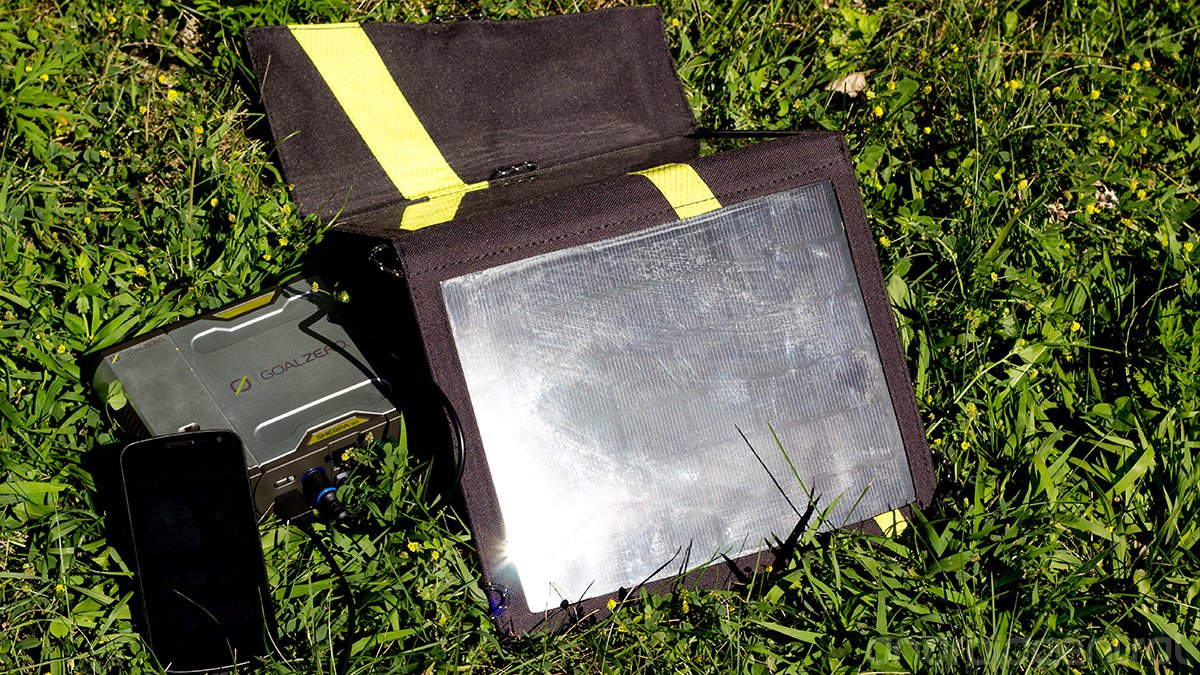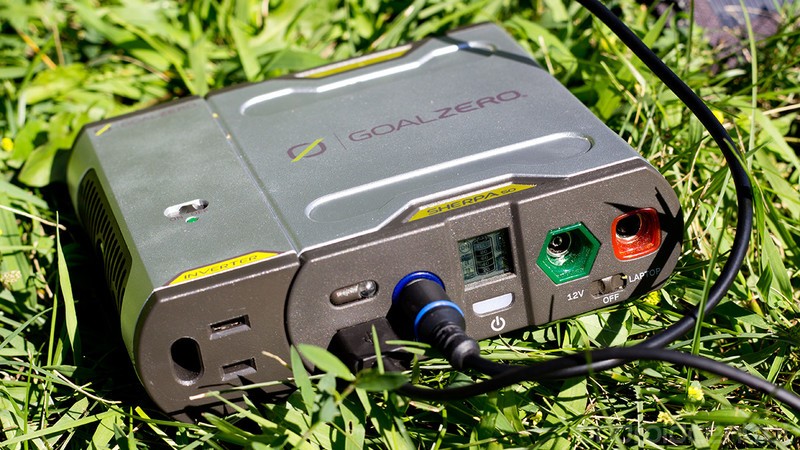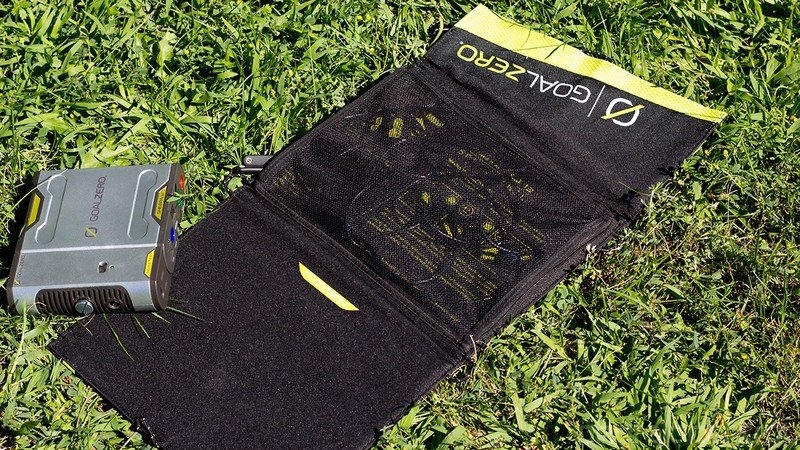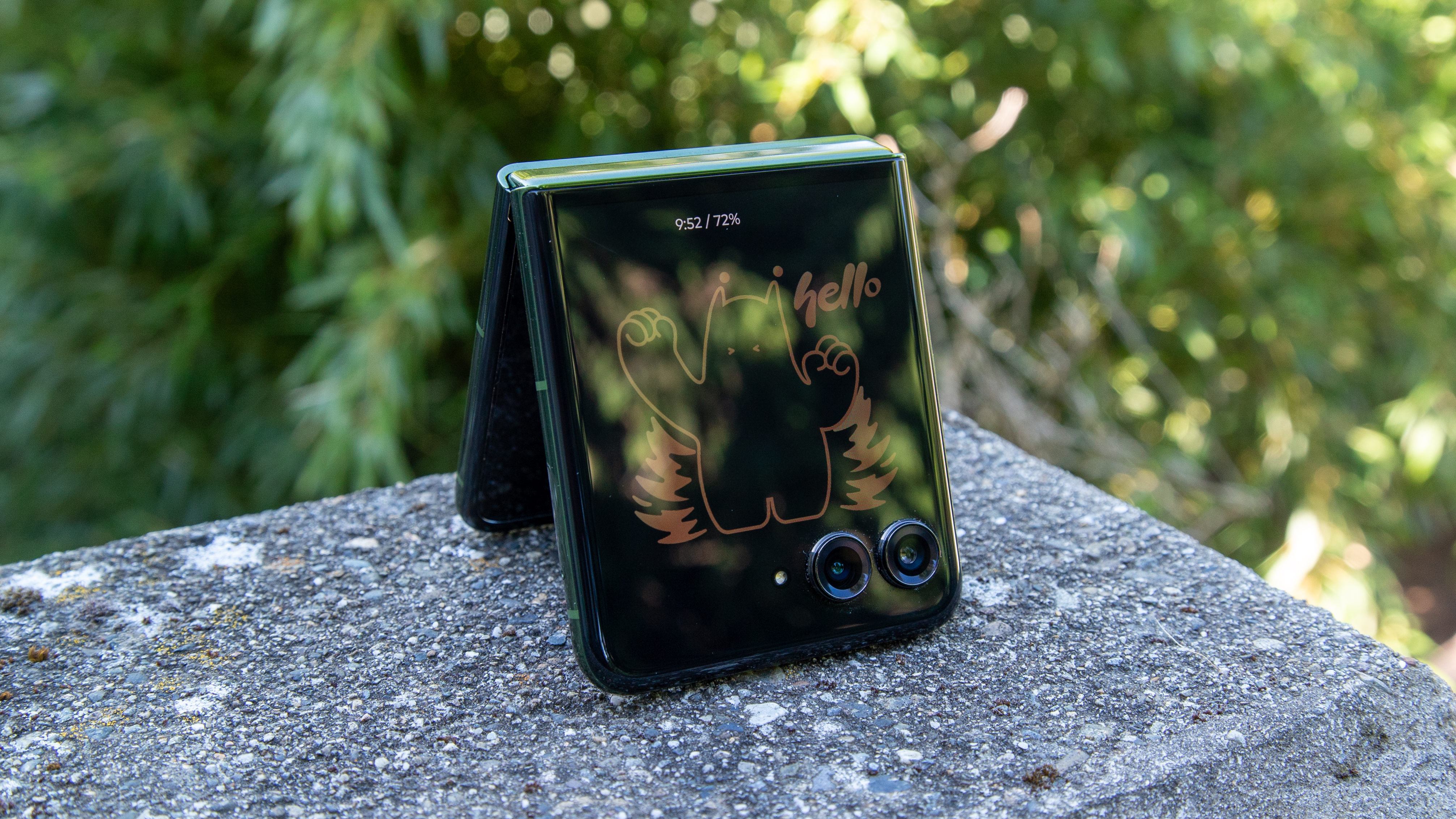Goal Zero solar charger review

The summer’s not over yet! If you’re finally getting around to that camping trip you’ve been putting off the last couple of months, or have the last in a long string of outings to finish off the season, odds are you’re mindful of keeping your phone and tablet powered. Never mind those guys that keep harassing you to put away the technology and enjoy the great outdoors; you’ve got an e-book to enjoy, music to listen to, pictures to take, and hikes to navigate.
To that end, I’ve been trying out the Goal Zero Nomad 13 solar charger and Sherpa 50 Power Pack. You can also get an optional inverter and cable pack to charge your laptop or other gadget - say, a mattress inflator. The solar panel is built extremely well, surrounded by a tough canvas material. A wide array of loops all over provide plenty of fastening options. I’m not a huge fan of the mesh backing used to contain the charging cables. If you’re outside, you want to keep that stuff good and dry. Also, the front is kept shut with a rather flimsy magnet. Velcro or some kind of mechanical latch would make me feel more confident.

The Sherpa 50 is built similarly tough, and has a plug for everything: USB, 12V, and laptop charger. With the optional inverter attachment, you can plug in anything with a standard two or three-prong plug. Everything is color and shape coded, so it’s easy to find which plug goes into which hole. The built-in LED flashlight comes in handy when sneaking out of the tent for a midnight bathroom break. The backlit display gives you a clear view of how much power is left in the battery too. A single cable along the top provides a secure hanging point. The Sherpa 50 can also be charged directly through a standard wall plug, so you can have plenty of juice on the ride to your campsite (and probably the first day, too).

Using a solar charger is trickier than you'd think. Unless you’ve got multiple panels chained together and you have solid, direct sunlight consistently throughout the day, don’t count on this keeping your phone charged right up to the top if you’re going to be using it a lot. I set up the Nomad 13 panel on my balcony to see how long it would take to charge the Sherpa 50 battery from scratch. With around two hours of direct sunlight a day and four hours of indirect light, it took about two weeks, counting a few overcast days. Keep in mind that the Sherpa 50 can provide about seven charges to your phone, which works out to about two days of basking for a single charge - less if you can get better access to sunlight. At that rate, you’ll want to be judicious about your smartphone usage, and doubly so for any tablets.
I’m a huge fan of the whole Goal Zero lineup - they’ve got sharp-looking, rugged, and easy-to-use solar chargers and batteries of all shapes and sizes. It’s great to keep around as an emergency back-up for those times that you’re going to be away from power longer than expected. As with many sustainable power solutions, it’s hard to rely on this exclusively, but it complements standard charging practices perfectly well. The one thing that might give you pause is the price. The solar panel on its own can charge your phone directly, and costs $159.99. If you want the battery with inverter, and the solar panel, it’ll come in at $399.95. Serious campers will be more willing to drop that kind of cash, but casual outdoorsmen will probably want to build up their kit one piece at a time.
- Goal Zero 42005 Sherpa 50 Silver/Black Solar Recharging Kit with Inverter
- Goal Zero 12003 Black Nomad 13 Solar Panel
- Browse all Goal Zero products
Be an expert in 5 minutes
Get the latest news from Android Central, your trusted companion in the world of Android

